Our Verdict
The Platform:4 doesn't come with all the extras that made the Platform:6 such a complete package, but in truth that's not a huge miss. If you can find it at a good discount (and we have) then the smaller desk becomes great value. But even so, it's a well-made desk that feels more spacious than its smaller width might suggest. The motor is smooth, the frame super-solid, and the light look makes it seriously appealing.
For
- Looks great
- Compact but still spacious
- Smooth action
- Sturdy
- Range of optional accessories
Against
- Off discount price is high
PC Gamer's got your back
Space is at a premium where I live. I may have been able to convert the wooden cabin at the end of my garden to a working space, but that still doesn't leave me with a ton of space in which to jam a couple of desks for my partner and I to work. So, a compact desk is absolutely something I've been looking for.
That's what the Corsair Platform:4 offers, especially in relation to its comparatively vast relation, the Corsair Platform:6.
I have a bit of a love/hate relationship with the Platform:6. It's a huge desk, and comes with a lot of accessories, but the overall price of the package is extreme. And, if I'm being honest, it doesn't justify that price tag for me. Its premium pretensions are let down by the build process being a slog and the fact that its surface is supremely prone to scratching. That was laid bare when I first built it, and it has only gotten worse over time.
It's been stood up in the PC Gamer office for over a year now, housing the test rig and is the space where we test our gaming PCs. And the dark wood surface has not survived particularly well. In my time with the Platform:4, however, a lot of those issues have been ironed out.
The smaller Platform:4 does cost less, but the white and light wood version I've been testing still costs $1,000, and that's without the pegboard accessories the big boi desk comes with as part of its cost. That's a lot of money for a compact desk, no matter how premium it looks and feels.
That said, currently, the Platform:4 is seeing a hefty discount, down to $650 in the US, and that really does feel like a big difference compared to the Platform:6. And, at that price, it feels like easily the best compact gaming desk you can buy.
Personally, I'm okay with losing the pegboard and the twin side shelves to hit that price; the base setup still comes with the mounting bar, and you get an excellent single monitor arm as part of the initial package. I've got it supporting a large 34-inch ultrawide gaming panel without sagging at all.
Keep up to date with the most important stories and the best deals, as picked by the PC Gamer team.
Being a smaller unit, the build process is inevitably less complex, but I still feel like it was a more streamlined procedure, as certain parts were already in place out of the box. Though that is itself a slight issue, given the instructions for the Platform:4 are shared with the Platform:6, and there are slight variations not necessarily covered in them.
But I had the thing unpacked and the legs and electrics screwed into the desk in a jiffy (technical term, which reads: around 35 minutes), and I was ready to flip it over and quickly attach the mounting bar. That didn't take a lot of time either, and with that, I'm done. With the Platform:6, I was hit with missing screws (though given the extra spare fixings packet that wasn't a biggie) and some places where the machining wasn't the best. I've had none of that this time, and it does feel like any of the manufacturing inconsistencies of Corsair's first desk have been buffed out with the Platform:4.

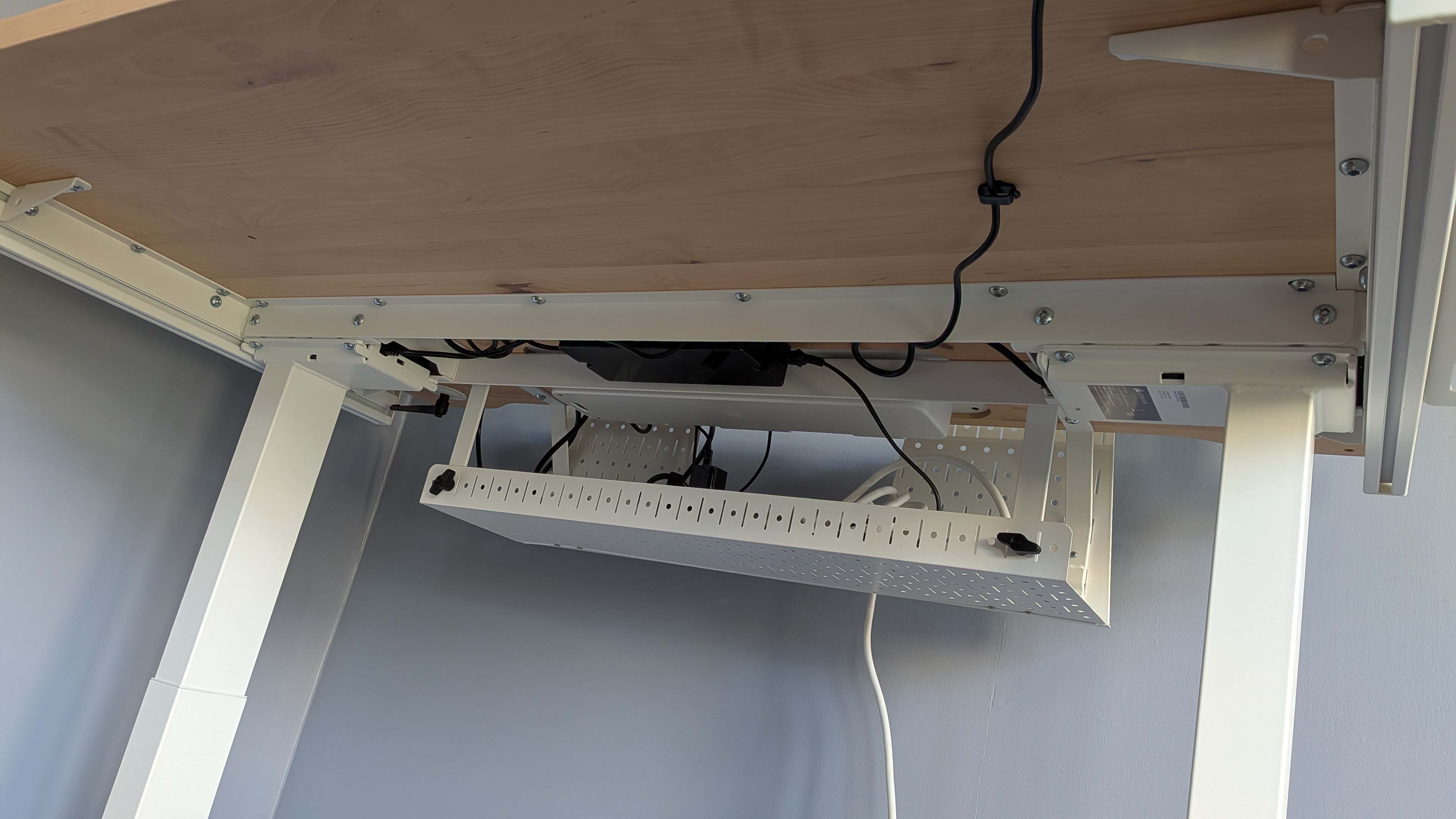
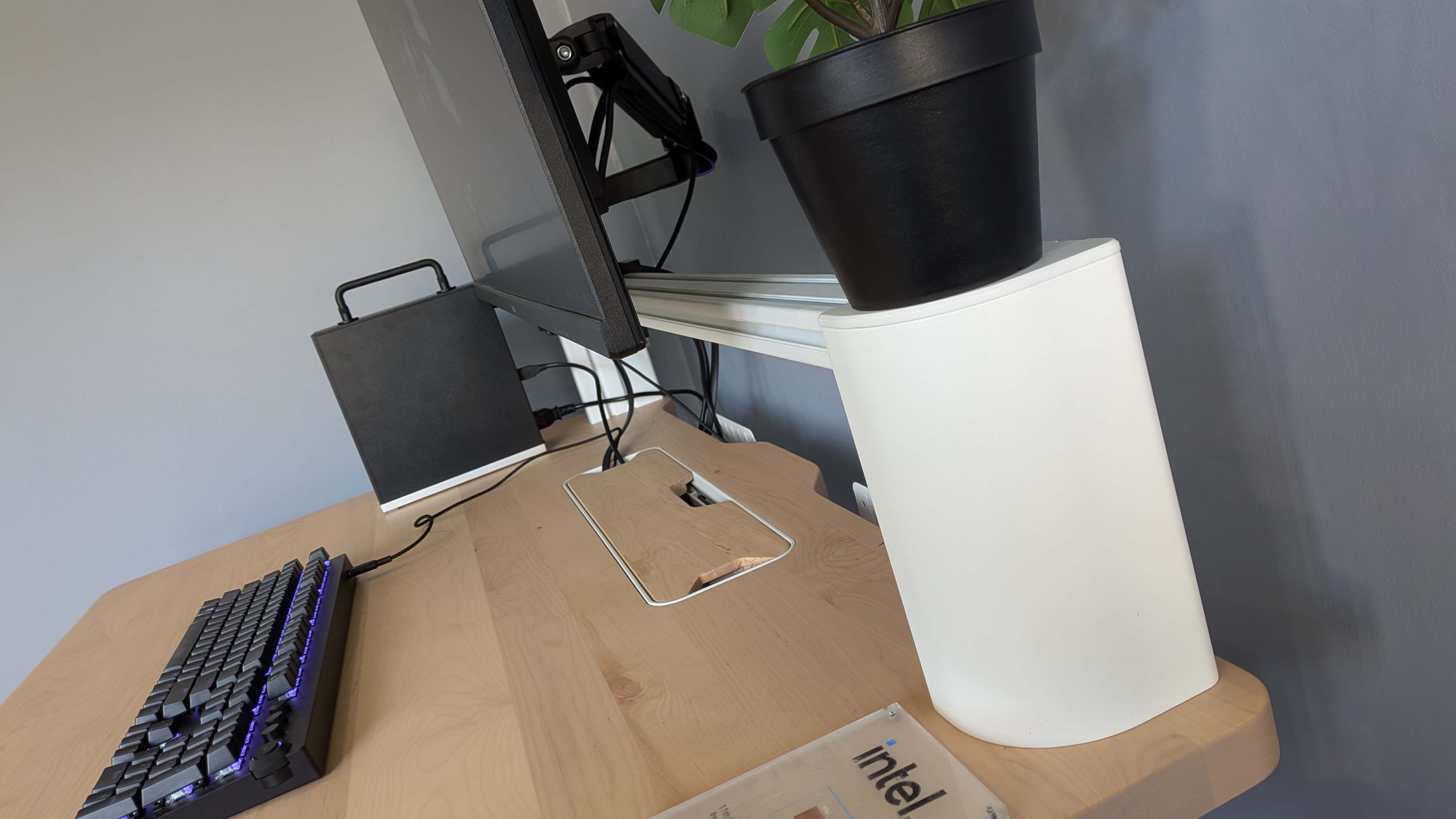

Given the huge amount of packaging material (and there's enough packaging material for multiple trips to the dump/recycling centre) that springs forth from the box, I was pretty impressed with just how speedy it was to go from flat pack to standing.
And yes, this is the Elevate model, which means it can go from sitting to standing mode thanks to its smooth, motorised legs. This is the exact same mechanism which supports the more expensive desk and is just as impressive. The motion is fluid, and the legs are super sturdy despite only being a two-not-four-legged design. That smooth motion means there's no jerking start or finish to the movement, so you don't have to worry about that cup on your desk sloshing hot coffee over your lovely, clean desktop.
The mechanism only has two presets but where something like the Dezctop Bifrost Elite 160 I use day-to-day has four, I only ever find I use one sitting and one standing preset anyway. There's no middle ground for me—I just need an ergonomically accurate setting for when I'm in a chair and one for when I'm stood at my desk. But, should more than one of you be sharing a desk, that might become an issue as you fight over the height presets.
If you're very, very tall, it might be an issue, too, as the Platform:4 taps out at 122 cm in terms of the maximum height, where the Secretlab Magnus Pro hits 125 cm, and the Dezctop will go up to 130 cm. For most of us, however, that's not going to be a problem. I'm a shade under six foot tall, and my standing preset is a comfortable 110 cm, so you would need to be a real long boi for 122 cm to be an issue, ergonomically speaking.
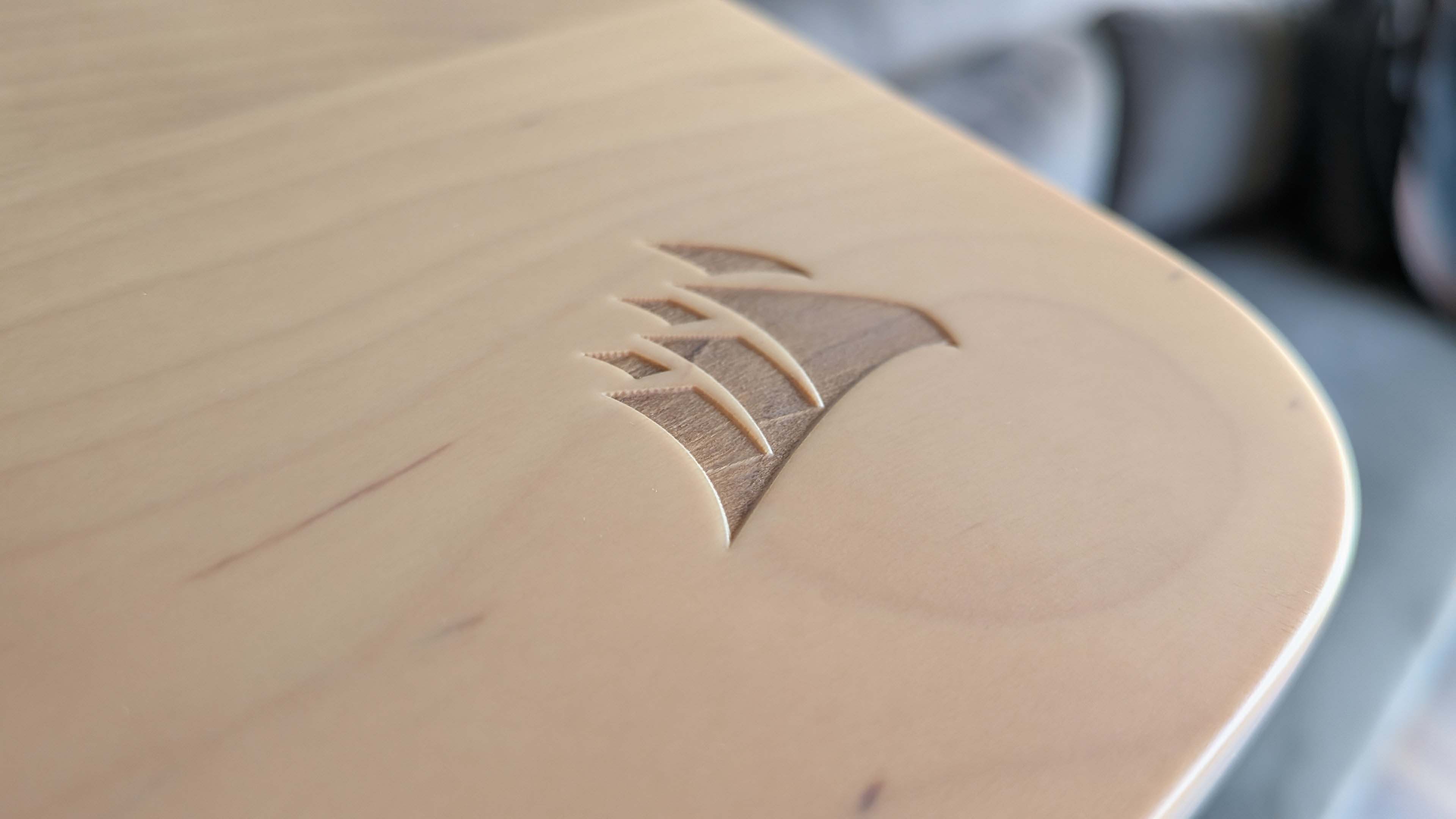
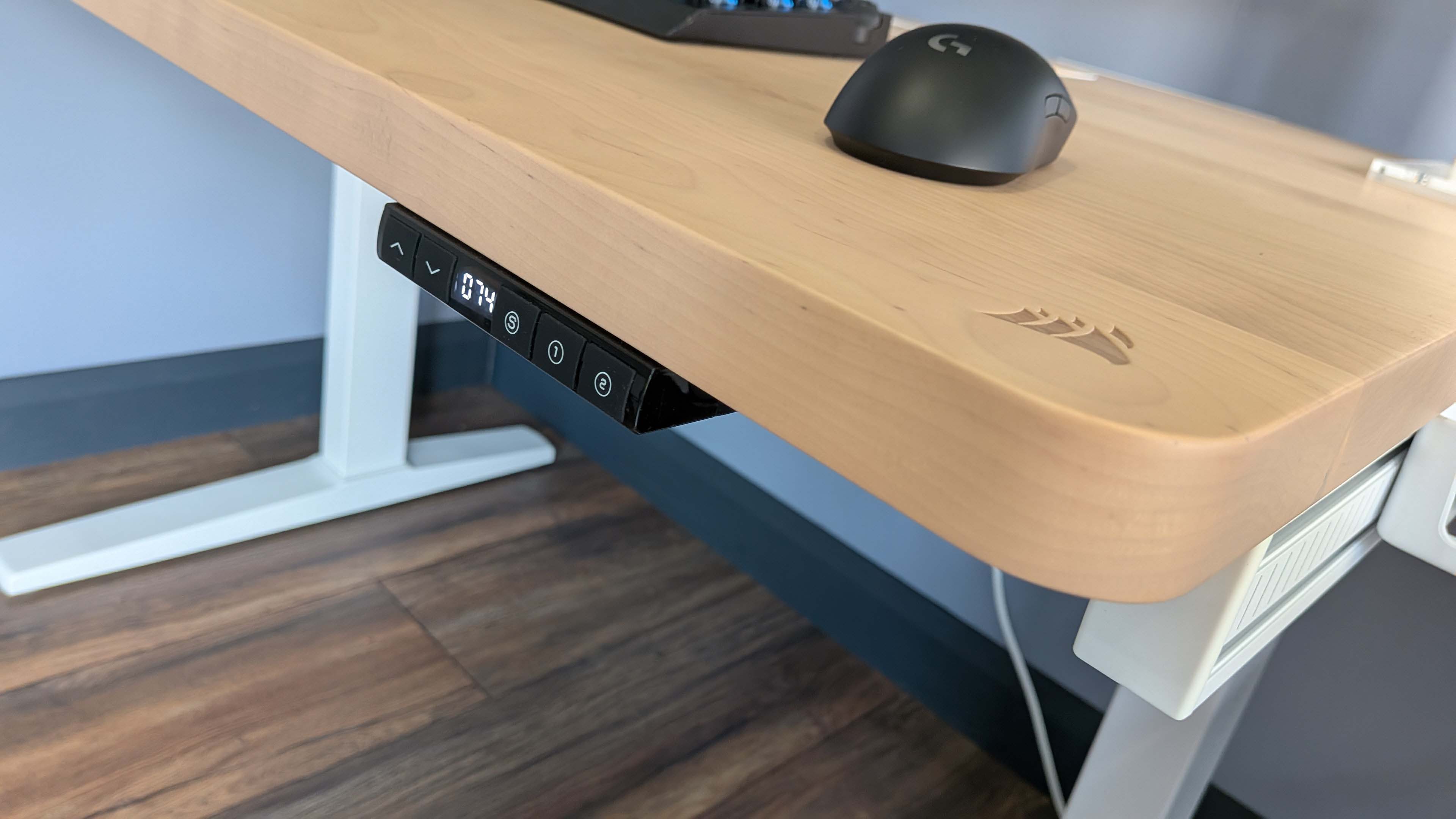


Maybe I've been more careful this time, but I've made not a dent in the surface of the Platform:4. By this point, with the Platform:6 ,a great gouge and multiple scratches were evident on the dark laminate, but this birch + pine stain desktop feels far more forgiving. I do like how chunky the wooden top is, too; it's far thicker than my Dezctop's desktop. And, honestly, I prefer this light look; it makes the desktop feel clean and less oppressive in your living space.
That clean desktop look is aided by a little 'bits' tray that comes in the box, and a little cubby hole in the rear centre of the desktop itself to hide charging cables and such. On the underside of the desk is a wide cable management tray where I've perched a six-socket extension cable, which powers both the desk itself and the system I have on top of it. That means there's just a single cable going into a wall socket with everything else hidden under the desktop.
It makes everything far more accessible than the canvas solution the Dezctop Bifrost uses, and has made swapping systems and accessories around much easier.
As I noted at the top of the review, I also really appreciate the smaller size of this desktop. At just four feet wide (not just a clever name), the space may not be huge when you've got a full PC at your side, but if you're in a place that doesn't allow for an enormous L-shaped desk, then the Platform:4 gives you a good-looking, sturdy alternative. It's also pleasingly deep, at 30 inches, it still feels relatively spacious despite the limited width.
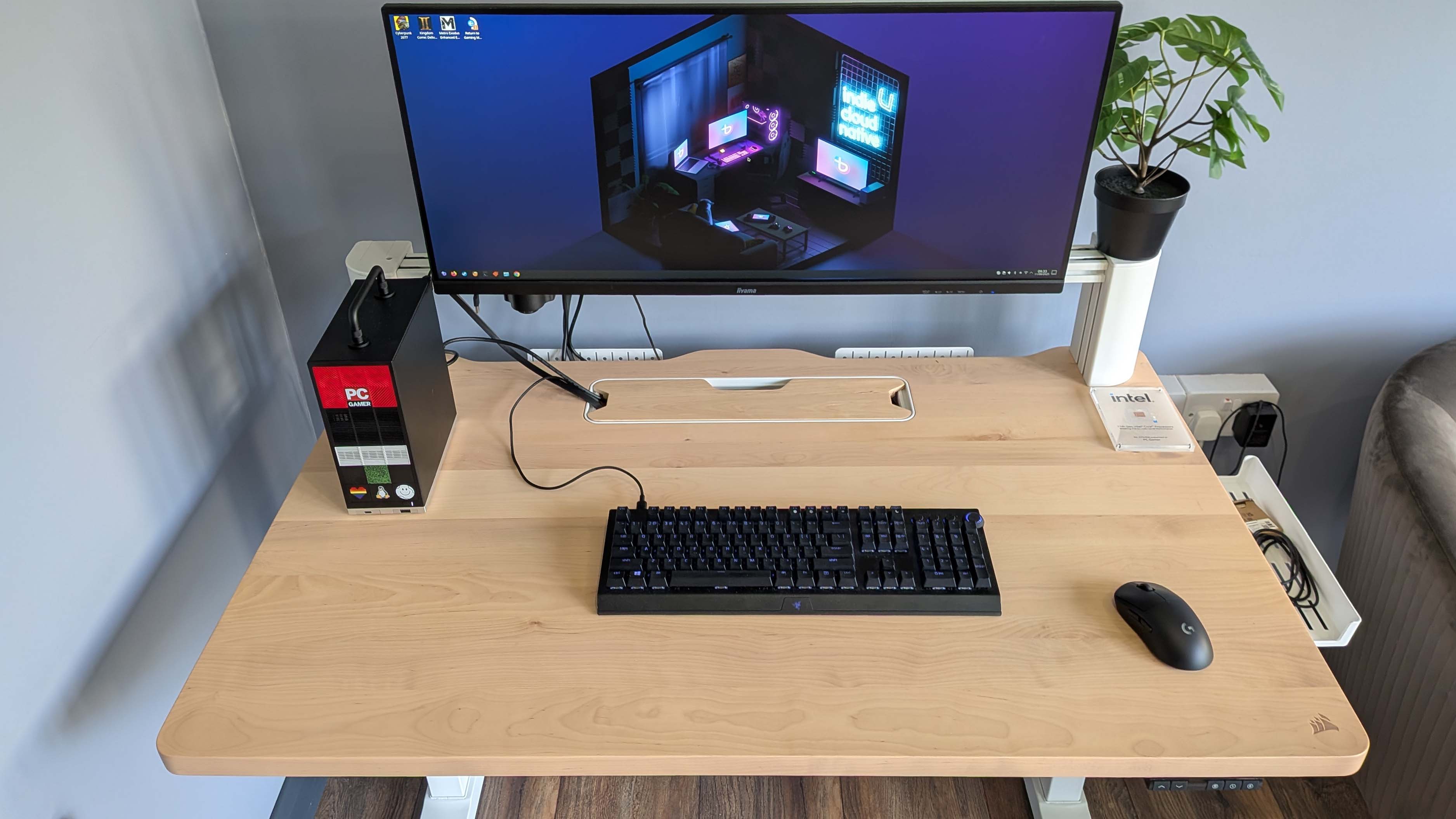

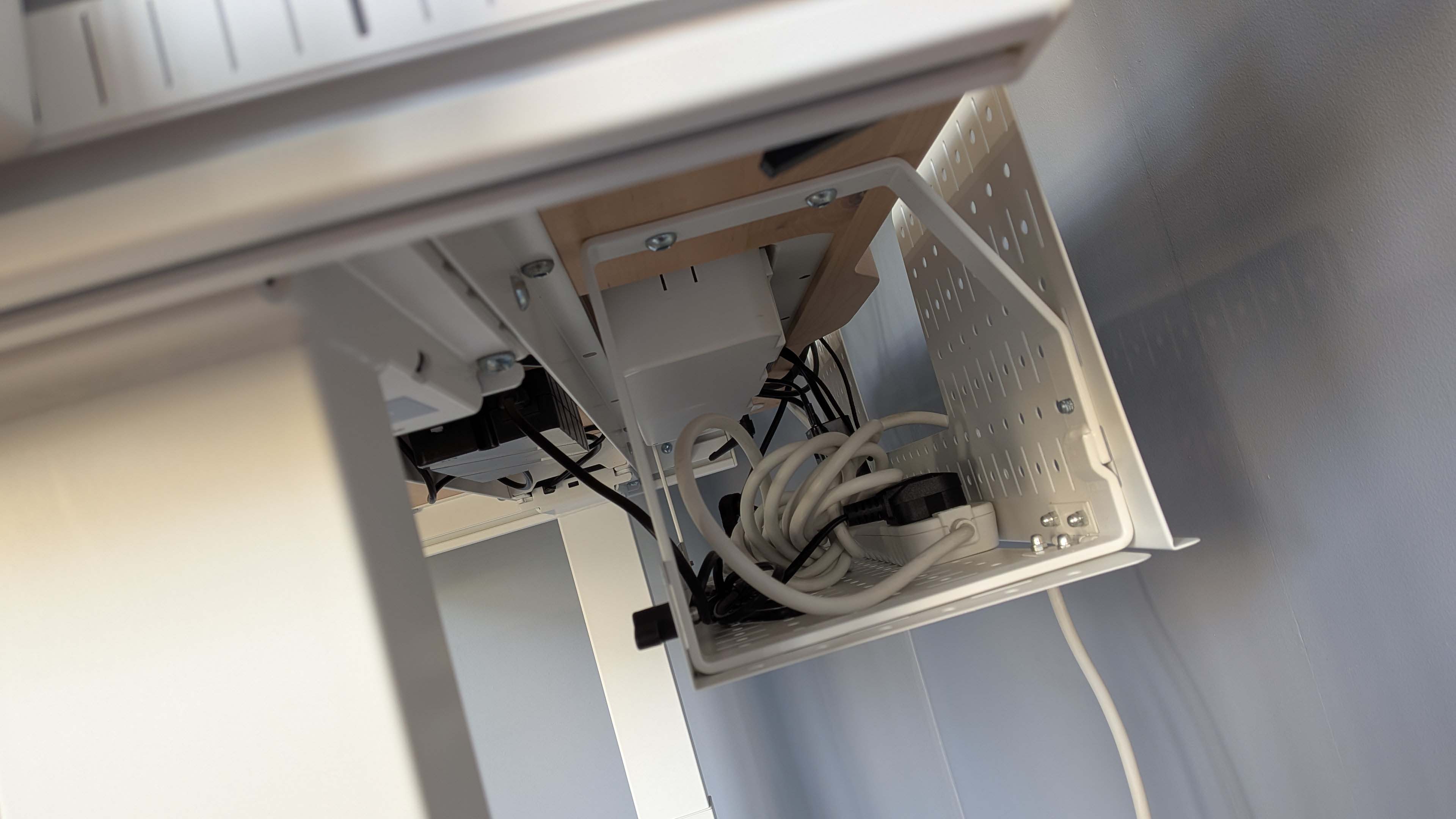

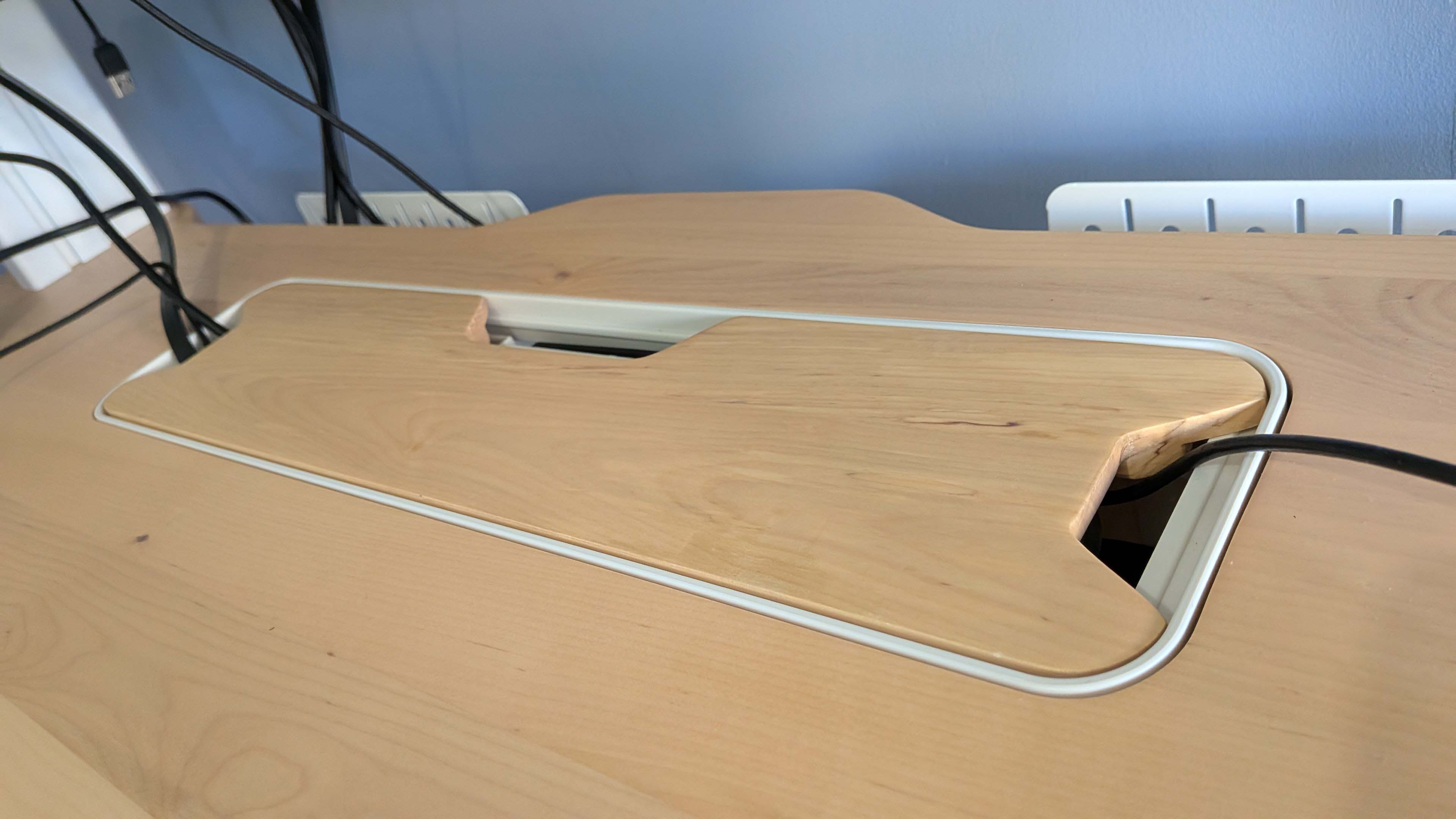

✅ You need a smaller desk: The four-foot-wide Platform:4 gives you all the good stuff from Corsair's bigger desk, but none of the issues. It's a compact desk that still delivers on the premium front.
✅ You can find it at a discount: We've seen the desk given a serious discount down to just $650 and that makes it a lot of desk for the money.
❌ The pricing looks wrong: There are times when the Platform:4 is listed for more than $1,000 or £1,000, and at that point, there are other good compact desks for the money.
❌ You share a desk: With only two presets, if you're looking to share with someone of unequal height, you'll end up fighting over the perfect desk adjustment.
It being part of the Platform family means that, although this is a pretty simple setup out of the box, there are a bunch of excellent additions to it should you want to expand the desk in the future. Personally, I think the $300 pegboard is not worth the cash, but if you find yourself wishing for a little more sideways space, there are easily attached extensions you can pick up for $40 in the future which are wide and sturdy enough to support a desktop PC. You can also get myriad Elgato mounts if you want to connect a stand for your webcam or key light, which sit on the mounting bar.
And the fact that you get a monitor arm in the package is a nice touch, too. With deskspace limited here, being able to shift your screen up, up, and away is super handy.
In all, I'm far more fond of the Platform:4 than its larger sibling. The setup is quick, the desktop sturdy, yet still relatively spacious, and it all feels fully premium, from build to final use. And more than anything, the price tag doesn't always make me rub my eyeballs in shock. You might well prefer the big ol' Secretlab Magnus, all RGB, magnets and metal, but it doesn't offer anything for those without the space for its five-foot+ desks.
I still can't ignore the fact the non-discount price is so damned high, but if Corsair is willing to drop the sort of discount which brings it down to $650 again, that makes the Platform:4 a great buy. And that would certainly cement it as one of my favourite gaming desks.
The Platform:4 doesn't come with all the extras that made the Platform:6 such a complete package, but in truth that's not a huge miss. If you can find it at a good discount (and we have) then the smaller desk becomes great value. But even so, it's a well-made desk that feels more spacious than its smaller width might suggest. The motor is smooth, the frame super-solid, and the light look makes it seriously appealing.

Dave has been gaming since the days of Zaxxon and Lady Bug on the Colecovision, and code books for the Commodore Vic 20 (Death Race 2000!). He built his first gaming PC at the tender age of 16, and finally finished bug-fixing the Cyrix-based system around a year later. When he dropped it out of the window. He first started writing for Official PlayStation Magazine and Xbox World many decades ago, then moved onto PC Format full-time, then PC Gamer, TechRadar, and T3 among others. Now he's back, writing about the nightmarish graphics card market, CPUs with more cores than sense, gaming laptops hotter than the sun, and SSDs more capacious than a Cybertruck.
You must confirm your public display name before commenting
Please logout and then login again, you will then be prompted to enter your display name.

